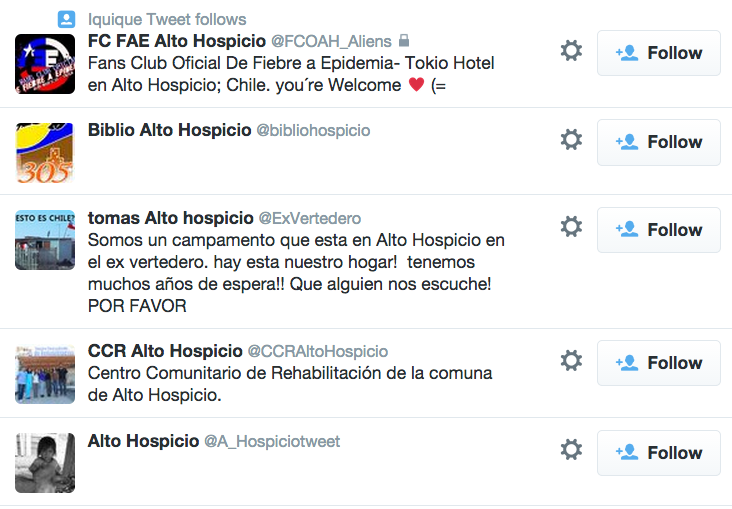For part one, click here: facebook: the facts
For part two, click here: whatsapp: the facts
For part four, click here: instagram: the facts
After WhatsApp, Twitter was the next most popular form of social media on the survey, but it’s use overall constituted only 30% of people. It was obviously more a younger person’s form of media with 33% of teens, 23% of 20-somethings and 21% of 30-somethings using it. By 40 only 8% of survey respondents had an account. Of those with Twitter accounts, just over half tweet or re-tweet at least once monthly. Those within that group average about 24 tweets and 24 retweets a month. Those who tweet are just as likely to re-tweet and vice versa. Teens tweet and retweet the most, with 71% of those who have accounts actively tweeting, and averaging 16 tweets and 21 retweets a month. Of twenty-somethings with accounts only 44% actively tweet, though they average 35 tweets and 35 re-tweets a month. Though 14% of thirty-somethings said they have twitter accounts none actually tweeted. For those 40 and above, only 18% have accounts, but two thirds of them actively tweet averaging 16 tweets a month.
Twitter allows for the use of hashtags (#) and tagging other uses (@), intended to allow people to search for trending topics or interact with other users. Yet Hospiceño have not taken full advantage of these features. For the most part original tweets are messages that could easily appear as Facebook status updates. Some reference food: “I want noodles and sauce” accompanied by emojis (those little faces and pictures that appear as another “language” on most smartphones). Some refer to television programs such as The Big Bang Theory or “Watching cartoons with my kids before bed.” (always with the name of the program hashtagged). Other describe activities: “Waiting for the bus to go home.” or “Working out in the gym” with workout partners tagged. Still others simply link to their Instagram pictures. In effect, for these users, Twitter is simply a way to share with a wider audience the photos they take with Instagram.
Obviously, the percentage of people using Twitter as compared to Facebook and WhatsApp represents a huge drop off. People tell me this is primarily because Twitter is fome or boring. In large part this is due to the fact that most tweets receive 3 or fewer “likes” or re-tweets, and most receive none at all. Even fewer are replied to. In essence, on Twitter one sends their thoughts out the universe, but the universe rarely answers. On WhatsApp, there is an intended audience that almost always responds. The audience of Facebook or even Instagram is less defined, but especially for younger users, there are almost always likes and comments that are returned. On Twitter, most posts are simply there to be seen, not interacted with.
Only a small amount of users say that they access news items on Twitter. One night after having sushi for dinner in Iquique, I went to the bus stop in the center of the city to catch a bus back to Alto Hospicio. It was around 8pm on a Thursday, the stop was quite full of commuters waiting to go home. Busses usually arrive every few minutes, but none had passed after 20 minutes. People began to ask those standing near them what was going on. After 45 minutes of no busses, people began sending text messages or making phone calls to family members asking if they knew what was going on. A police man strolled past the stop and the 60 year old woman standing next to me asked him if there was an accident that was causing a delay. He said he didn’t know of any accidents, but advised the woman to call the non-emergency police information number to ask. She did just that and informed the small group that had gathered around her that there had been a major accident on the highway that leads up the hill from Iquique to Alto Hospicio. Traffic was at a standstill was expected to take several more hours to clear. I finally made it home a little before midnight, and when I turned on my computer I checked twitter, and my feed was loaded with reports of the crash. It hadn’t occurred to me, nor seemingly anyone of the nearly 100 people at the bus stop to check twitter for information. Yet it was there all along.
Twitter use also seems to suffer from the fact that the page view itself, is boring, whether accessed on a computer or smartphone. On Facebook and other visually-centered platforms discussed later images are central whether personal photos, memes, or the pictures that accompany links. On Twitter the page is dominated by text on a white background and many users say they get fatigued quickly just looking at the page. Twitter doesn’t offer the entertainment and distraction value equal to platforms with more image-centric layouts, so even those Hospiceños that use Twitter see it as secondary to other social networking sites where they concentrate more energy.



 RSS Feed
RSS Feed
